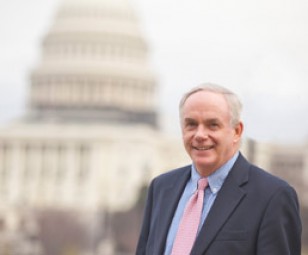A Few States Will Play Outsized Role in the Election
November 6th is a long way off, so beware of those who would now predict which way the U.S. presidential election will go. But we do know that come Election Day, the results from a relatively small group of states will be decisive.
In the U.S. system, presidents are elected by accumulating electoral votes in the state-by-state elections in all 50 states. First one to secure 270 electoral votes wins, no matter what the popular vote total is (see Gore, Albert, November, 2000).

President Obama is counting on the Northeast and West Coast to give him a win in the November presidential election. Photo: AP
But the political landscape dictates that certain states inevitably turn out to be more crucial than others for a candidate to win the White House. These states are in the vaunted so-called category of “battleground states” — larger states where either party nominee could prevail, and that often hold the balance of power in our national presidential elections.
Of the 50 states that vote, about four-fifths usually lean to one party or another. For example, Democratic candidates can usually count on doing well in the Northeast and along the Pacific coast, with lots of help from reliable large electoral states like New York, and in recent years California, to help form a presidential electoral base.
On the Republican side, look to Texas, much of the deep South, the Plains and several states in the Mountain West to form their electoral base. That leaves in any given election year about 10 to 12 true battleground states where the results could go either way, states that usually draw most of the attention during presidential campaigns.
In 2008, President Obama basically ran the table in the key battleground states, winning all the big ones that matter (think Florida, Ohio and Colorado) and adding in a few that don’t usually vote Democratic (Indiana, North Carolina and Virginia).
This year looks to be a different story. Gone are the days when Mr. Obama could present himself as an agent of change with a clean slate. Now he has to defend his record in office, especially on the economy, and that could be a tall order in the most competitive states this November where independent or swing voters will probably be the deciding group between the president and Mitt Romney.

Mitt Romney is looking to the Midwest and the South to put him on top in November. Photo: AP
One measuring stick since 1960 has been to look at three states—Florida, Ohio and Pennsylvania. The candidate who wins two out of those three has gone on to win the presidency every time since then. Pennsylvania leans Democratic, so the true swing states are Florida and Ohio. I think it’s still a good test so if you can accurately predict which candidate can nail down two of those three states, you’ve likely picked the winning candidate.
But what President Obama did in 2008 was expand the electoral battleground for Democrats, at least for that cycle. The question is will it hold true again this year? By winning Colorado in the West, plus Virginia and North Carolina in the South, the Obama team has set up more possible paths to victory in 2012 by giving them more options to put together a winning coalition.
Given the slip in the president’s popularity as he seeks a second term, though, I would think the first line of states the president’s team will be worried about will include Indiana, North Carolina and Virginia, all narrowly won four years ago and prime pickup possibilities for Romney and the Republicans.

Al Gore won the popular vote in 2000, but not the electoral votes. Photo: AP
One key to this year’s election will be how the two parties do among the fastest growing minority group, Hispanics. Latinos now account for about 16 percent of the U.S. population and will make up about 29 percent by 2050.
In 2008, President Obama won 67 percent of the Hispanic vote against John McCain. A recent Washington Post poll found Mitt Romney was viewed favorably by 32 percent of Hispanic voters, while 39 percent had a negative view of him from the Republican primaries.
Romney is going to have to do a lot better than that among Hispanic voters, who will play a key role in several swing states including Colorado, New Mexico, Florida and North Carolina.
Some Republicans worry that the angry rhetoric over illegal immigration from the Republican debates, both this year and last, has alienated Hispanic voters. But Romney advisors argue that his clear path to the nomination now will allow him to more carefully court Latinos, especially those who are regular church-goers and who tend to be conservative on social issues.
Still, with all the talk in the campaign about how to stop illegal immigrants, Romney may have an uphill climb with a voting group that is only going to grow in influence in the decades to come.


One response to “Polls Show Tightening Race between Obama and Romney”
[…] Voice of America (blog) […]